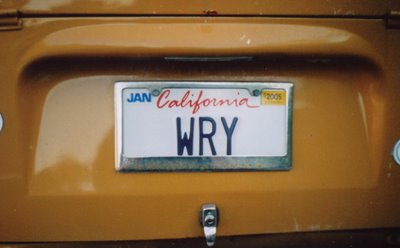
Presented at panel on The Academy and Local Literary Culture, Associated Writing Programs Conference, March 27, 2004. Panelists: Mary Margaret Sloan, Devin Johnston, Alan Golding, and Paul Hoover. Published in Chicago Review 51.3 (Autumn 2005): 173-177.
I moved from rural Indiana to Chicago in 1968 and lived in Uptown, South Shore, Lincoln Park, East Rogers Park, and West Rogers Park for 26 years, long enough to feel a part of its various local conditions. In 1971, based on the 15 poems I’d written, I was accepted into the first class of the Program for Writers at University of Illinois Chicago, founded by Paul Carroll. Up to that point, my reading in poetry was what I could find in the Chicago Public Library: Sylvia Plath, Theodore Roethke, Galway Kinnell, William Carlos Williams, and the Irish poet Thomas Kinsella. Paul Carroll and my classmates immediately expanded my reading but it didn’t reflect the local condition; that is, I was not led to reading local poets except for Paul himself and his recent discovery Bill Knott (first published as St. Giraud, “a virgin and a suicide”). The most important turn in my reading may have come when a classmate dropped Ron Padgett’s Great Balls of Fire on a conference table in Adams Hall. The work was so different from that of Roethke and Plath that it reordered my experience of poetry. I didn’t plunge completely into the New York School, nor did I remain where I was. I’m thankfully still in passage, within and among a number of heavy planets: Deep Image, surrealist, the English Metaphysicals as well as the American (Dickinson), Williams and Stevens, Vallejo and Neruda, language poetry, Ashbery and Schuyler, Lorine Niedecker, Thomas Traherne, Robert Creeley, Zukofsky’s “A-14,” Elizabeth Bishop, Marianne Moore’s “The Fish,” Oulipo procedures, and Gwendolyn Brooks’amazing vocalizations and close rhymes, as seen in “I Love Those Little Booths at Benevuti’s.” None of the above, including the “local” poet Brooks, were of my place. She lived on the South Side, and I lived on the North Side, which are virtually different cities. But I came to possess them. Was Williams important to Rutherford in his own time, except as a doctor of medicine? Did his next-door neighbors care? But the arrival of spring in his back yard was important to poetry. Were Dickinson and Traherne necessarily of their place? Do we read the poet for the place? Or does the poet read the place for the essential?
In 1971, with Dean Faulwell and Jim Leonard, I founded the poetry magazine OINK! Maxine Chernoff joined as an editor with issue five; by number seven she and I were alone in the effort. The magazine ran for 19 issues before tranforming into New American Writing, now in its 21st issue. To what extent were they, are they, Chicago magazines? Most of its editors were from elsewhere and all were to wind up elsewhere. The editorial policy contained no recognizable influence of Carl Sandburg, Edgar Lee Masters, Vachel Lindsay, Eugene Field, The Cliff Dwellers Club, Richard Wright or The Masses. Was Richard Wright a Chicago author? Nelson Algren was a Chicago writer, until he grew sick at heart, sold his belongings at a yard sale (one of our friends bought his radio), and moved to New Jersey. Why New Jersey? Because it’s more like Chicago than Manhattan? Kenneth Rexroth left Chicago. Even Saul Bellow packed his bags. Gwendolyn Brooks was a great Chicago poet, and she wrote of its places, like the Mecca. Who are the Chicago poets today? Bin Ramke of Denver, Mark Strand of New York City, Li-Young Lee of China and Malaysia, Marvin Bell of Iowa City, Albert Goldbarth of Wichita, Stuart Dybek of Kalamazoo, Elaine Equi and Jerome Sala of New York City, Paul Hoover and Maxine Chernoff of San Francisco, Andrew Zawacki of Warren, Pennyslvania, Luis Rodriguez of East Los Angeles, Sandra Cisneros of San Antonio, Devin Johnston of St. Louis, and Maureen Seaton of Miami Beach, to name a few. The leading Chicago poet is Mark Strand, that’s that. Who will butcher the hogs and stack the wheat? When Algren left town, the Chicago media suggested that Algren, like Keats, had been killed by a review, the lack of one in the Chicago media. But the Chicago reviewers have always treated me very respectfully.
Since 1994, my primary residence has been in San Francisco. From that time until this fall, I commuted to teach in Chicago, where I taught a double load in the fall semester of each year (5 classes), ran a reading series with 8-10 annual events, took responsibility for two poetry magazines, and coordinated a growing undergraduate poetry program. The resulting distance from both Chicago and San Francisco created uncertainty about my place and hurt me politically, especially in my workplace.
For years, Chicago was a fly-over city. The real world of literature existed on the coasts. Chicago’s main poetry event used to be Poetry Day sponsored by Poetry. In 1972, at the suggestion of Paul Carroll, a few of us including Lisel Mueller, Mark Perlberg, and Martha Friedberg founded The Poetry Center at the Museum of Contemporary Art. The idea was to bring poets to Chicago to read their work. For the same reason, to leap high enough to connect with what was not local, Maxine and I published New American Writing, sponsored a reading series at Links Hall, and served on the board of The Poetry Center. San Francisco comes ready-made. Someone else did the work of building (Kenneth Rexroth, the Duncan and Spicer circles, and so on). Chicago remained to be built.
Are San Francisco authors more sophisticated than those from Chicago? Are they really French; that is, French Communists? All my neighbors are Buddhist including the poet Jane Hirshfield, the personal injury lawyer Milt Weiss, who owned Fantasy Records when Ginsberg recorded “Howl” on that label, and his wife Joan, who has backed her car into our car four times and once into the house. That’s my local condition, like fog in the evening, crane flies cruising the wall, and Stellar Jays in the yard terrorizing the cat. In Chicago, it’s walking to Pizano’s for deep dish pizza, hot and cold air that strikes you a blow, and a surprisingly good poetry section at the Borders on Michigan. D.T. Suzuki writes that Buddhism and the mysticism of Meister Eckhart are related. My upbringing in Midwestern German Pietism may have been relevant after all, preparing me for life in San Francisco. When Maxine and I invited our first Mill Valley friends for dinner, we served pork loin. Our guests stared at the dish in amazement. This was food from another climate. The work of the Spanish poets, Robert Bly tells us, is fleshed and blooded. Do I admire the Spanish poets because I’m German? The history of poetry includes pork loin, watercress soup, and starvation. Can I sprinkle a little realism over that dish?
For many years in Chicago, my role as a teacher, editor, organizer of poetry readings, and poet was to encourage openness to the “new.” I was free to do what I wanted with New American Writing, as a poet, and in the classroom. But I was made conscious of my limitations when it came to the English Department’s reading series. The warning shot came from the former Chair of the English Department when he stated his dislike of a presentation by language poet Bob Perelman. It was elitist, he said with anger. The Chair had been doing some stand-up comedy on the weekends and had an idea of the popular taste. Are the Marxists now the elitists, even the vulgar ones? I was careful thereafter to put a balanced face on the reading series, with a reading by Gerald Stern and Li-Young Lee next to one by Michael Palmer and Ann Lauterbach. My best students were sometimes puzzled. They liked the Palmer and Lauterbach better, and so did I. But I had to be fair.
When I won an NEA Fellowship in poetry in 1980, the literary director of the Illinois Arts Council said that I’d won because I didn’t write like a Chicagoan. How exactly does a Chicagoan write? Is it different from the Pittsburgh style?
Which brings us to the academy. For many years, I taught at an open-admissions arts and communications college in the South Loop that had a large enrollment of first-generation college students. In Auden’s terms, we were throwing the little streets upon the great, and it was working. My poetry students were being accepted into the country’s leading MFA programs—Brown, Bard, Columbia University, University of Iowa, Bennington—and were becoming known in the world (Elaine Equi and Mary Jo Bang). At the same time, the poetry I had supported, a mélange of New York School and language poetry, was coming into its own. Charles Bernstein held a chair at SUNY/Buffalo, Bob Perelman was an Associate Professor at Penn, Ann Lauterbach joined Ashbery at Bard, and Mary Jo Bang was tenure-track at Washington University. Even the avant-garde of the 1950s—Creeley, Ginsberg, Baraka, Ashbery, Levertov, and Snyder—held academic positions. By the mid-90s, notable poets of the former mainstream like Jorie Graham and Brenda Hillman were being impacted by the new style. This hybrid approach was becoming dominant even at the most sacrosanct of MFA programs, The Iowa Program for Writers. Had the little streets defeated the great? Or had the great assimilated what they needed to hold sway? Perhaps the usual thing had happened, a revolution of the word for the post-1975 and post-1989 generations.
How does this shift in poetics relate to locality? Aren’t New York and San Francisco supposed to be the places for experiment? Ghettos of the avant-garde? Palaces of innuendo and vivacity? Would the Chicago Adam eat of it, and who is the Eve of postmodern seduction? Michael Palmer or Marc Smith, the founder of Poetry Slams? A former student attending the Penn State MFA program reported that her poetry instructor returned from a San Francisco vacation three years ago with the news that something called language poetry was going on there. “Do you think it will come here, too?” the instructor asked with fear in her voice.
I have a print-out from a Chicago poetry website that shows the incredible growth of experimental poetry in Chicago in recent years: The Discrete Series, the Danny's Tavern series, the Chicago Poetry Project, the Myopic Poetry Series, Chicago Review and Conundrum. To that list, I would add Flood Editions, edited by Devin Johnston and Michael O’Leary, Peter O’Leary’s magazine LVNG, Columbia Poetry Review as formerly constituted, Another Chicago Magazine at its most progressive, the recent arrivals of Margy Sloan and Bin Ramke, among others, and a new openness to such writing at School of the Art Institute and University of Chicago. There’s nearly as much experimental activity in Chicago as in San Francisco, and that’s saying something. One can now say, “Lisa Jarnot is in town” or “Ron Silliman’s reading at Chicago Poetry Project.” In this respect, the city has finally grown up.
The ironies of the bohemian versus the academic, the outsider and the insider, are a little tired. Poetry is practiced by all and in every social place. In the long run, at least, the best comes forward. The independent or non-academic position is charming—Lorine Niedecker on Lake Koshkoning, Carl Rakosi doing social work, the good Dr. Williams forcing a throat—but it is not necessarily a moral high ground. Jeremy Prynne teaches at Cambridge University, and his stuff is pretty weird. Modern poetry going back as far as Whitman and Dickinson has the pattern of the obscure, strange, and marginal rising to classic status. The classic I was taught in school was “Thanatopsis” by William Cullen Bryant. What was that about?
Community is complicated. Poetry rises from local conditions—the local universals of sun, seed, bed, and fire. The reader appears and disappears in a second. The mind sways in its own wind. Now and then the body remembers.
 Edge and Fold (Berkeley: Apogee Press, 2006) is available from the Small Press Distribution website at www.spdbooks.org. Type "Hoover, Paul" in the "Search for Books" box and all of his books currently available will appear, as well as issues of New American Writing, which he edits with Maxine Chernoff. The beautiful cover art is a photograph, Ball on Water (Pelota en agua), 1994, is by Gabriel Orozco, courtesy of the Solomon R. Guggenheim Museum, New York.
Edge and Fold (Berkeley: Apogee Press, 2006) is available from the Small Press Distribution website at www.spdbooks.org. Type "Hoover, Paul" in the "Search for Books" box and all of his books currently available will appear, as well as issues of New American Writing, which he edits with Maxine Chernoff. The beautiful cover art is a photograph, Ball on Water (Pelota en agua), 1994, is by Gabriel Orozco, courtesy of the Solomon R. Guggenheim Museum, New York.


















